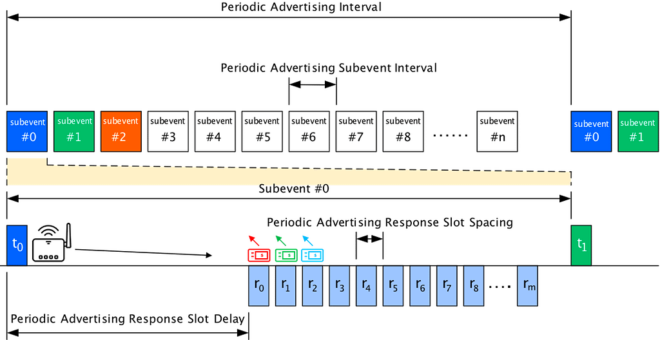
Recently, I had a chance to speak with Stephen Zhou, McWong’s vice president, about how McWong is leveraging recent breakthroughs in Bluetooth® technology, such as Bluetooth Mesh networking.
McWong is organizing a very early Bluetooth Mesh lighting control project to publicly demonstrate genuine interoperability based on Bluetooth Mesh networking technology. The 25,000-square-foot commercial project site incorporates a large warehouse and assembly area, private offices, open-plan areas, conference rooms, and training spaces, along with a daylight-filled employee lunch/social activity area.
According to Zhou, the initial phase of this multi-phase project serves as one of the first North American proof-of-concept installations to measure and assess the ease of deployment and commissioning of Bluetooth qualified mesh product solutions, particularly in a phased approach that deploys different stages at a time. “We’re beginning with a warehouse space,” notes Zhou, “because it is the area most in need of a retrofit but also, because it presents the most technical challenges and the most opportunities to explore Bluetooth interoperability.”
During our discussion, I had the opportunity to learn more about this unique project and explore topics including the importance of interoperability in lighting, the advantages of Bluetooth, potential cost savings, and additional benefits. Here are a few highlights from our conversation.
Q & A with Stephen Zhou
Who are the manufacturers that will participate in the installation?
Right now, we have Flex, Filamento, LinmoreLED, and LumEfficient participating as fixture manufacturers in the first phase of the retrofit, the warehouse, and product assembly area. Plus, Silvair is participating as the software interface provider.
We are also having conversations with quite a few other manufacturers and anticipate that others will be interested in participating in other phases of the demonstration.

What does Bluetooth enable for your product, and why have you chosen to use Bluetooth technology?
Bluetooth® enables our products to really become future proof, in the sense that the hardware can be easily updated to incorporate future capabilities via Bluetooth connectivity. That capability, as well as the easy accessibility of the standard, being accessible by anyone carrying a smartphone, is quite appealing. Traditionally, lighting control commissioning has the reputation of being extremely difficult and time-consuming, so the ease of use is extremely important.
Interoperability is clearly a significant factor in this project, can you tell us more about why it is so critical?
True interoperability offers the ultimate in flexibility for the lighting designer, contractor, and facility professional. It enables them to undertake retrofit projects in phases, with reduced or phased capital costs, on a schedule that meets their needs. At the same time, they do not need to be concerned that the products they purchase today will not work with products they may procure two or five or even 10 years from now. This is very valuable in the current business environment.
What would the cost savings look like before and after installation? And what are the additional benefits?
This project, particularly in this first stage involving the warehouse and product assembly areas of the facility, is a retrofit from legacy light sources to LEDs controlled by Bluetooth controls. So, we have a savings component that represents the lighting upgrade and another savings component that represents the use of advanced controls.
It is premature to discuss specific cost savings as the installation has been operational for less than a quarter, although we do expect to document energy savings once the project has more operational data. Regarding other savings, there is a savings component related to the avoided labor cost resulting from not having to install low-voltage dimming wiring. There are also occupant productivity benefits, both from the point of view that occupants no longer have to enter and exit from a single location but can use one of multiple points of access and still have ample illumination. There is also improved safety benefits, as the lighting system is more responsive to worker and forklift movement throughout the warehouse during the workday.

What are some of the major market challenges? And how does Bluetooth help you meet them?
As with any technological advance, some of the most significant market or adoption challenges involve a lack of education about the new technology, what it actually is, how it works, what its limitations might be. Because most people have had some sort of exposure to Bluetooth® through wearables, smartphones, and the like, this challenge may not be as strong. However, there is still some strong perceptions in the design community and building industries about Bluetooth as a “consumer” technology so there is a lot of room for education.
What role do you see Bluetooth playing in the industrial/commercial world?
There are a lot of indications that the Bluetooth connectivity will facilitate several beyond lighting capabilities that would be valuable in the industrial/commercial world. For instance, mapping commercial spaces based on occupancy would be useful both for space utilization but also for emergency preparedness and disaster recovery. In transportation settings like airports and railway stations, some of the wayfinding and beacon applications are already being used. I think there are other applications still to be identified.
To learn more about how McWong is using new Bluetooth® technologies, check out this article: How McWong International is Harnessing the Power of Blue.
![]()
FEATURED DOWNLOAD
Bluetooth Mesh Networking: Paving the Way for Smart Lighting
Bluetooth Mesh networking brings the multi-vendor interoperability, low power, and low latency pedigree of Bluetooth Low Energy to the world of commercial lighting. Discover how this innovative technology can turn wireless connectivity into a smart lighting wireless platform.




![shutterstock 1653733096[1]](https://www.bluetooth.com/wp-content/uploads/2024/03/shutterstock_16537330961-660x372.jpg)
![Periodic Advertising with Responses[1]](https://www.bluetooth.com/wp-content/uploads/2024/02/Periodic-Advertising-with-Responses1-660x345.png)



























